Planning a long drive and want to take your pets? These tips will boost your confidence and help ensure your adventure is fun for everyone!
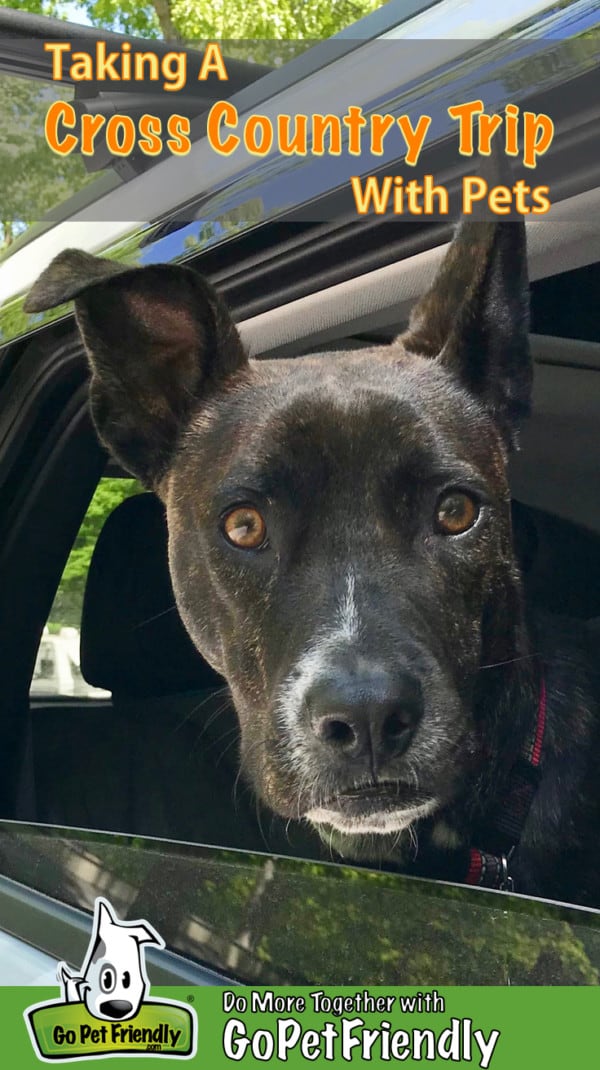
Tips For Planning a Cross Country Road Trip With Pets
Taking a cross country trip with your pets might sound intimidating. But it’s easier than you think! We’ve criss-crossed the country many times with our dogs, and we’re happy to share these tips.
Get a Pet Check-up
Before you start planning a cross country trip with pets, it’s a good idea to visit your vet. Confirm that your dog or cat is healthy enough for the long trip, that all of her vaccinations are current, and stock up on any medications she needs.
You should also discuss fleas, ticks, heart worms, or other health concerns that are common in the areas you’ll be traveling. And don’t forget to ask about remedies for car sickness, diarrhea, and allergic reactions – just in case!
READ MORE ⇒ What You Should Know About an Emergency Vet (Before You Need One)
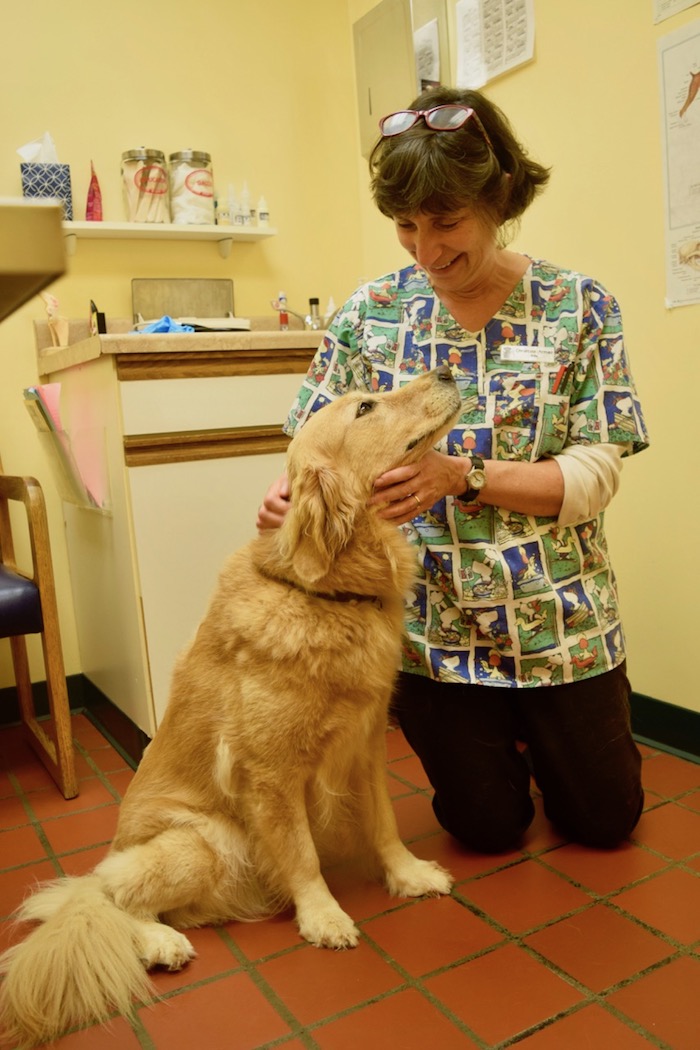
Finally, consider having your pet micro-chipped. It would be a nightmare, but pets can get separated from their people while traveling. A current ID tag and a microchip will help you find your furry travel companion if she should get lost.
After your visit, pack your pet’s vaccination certificate in her travel bag. Then scan the rest of her medical records to a USB drive and take it along on your trip, in case your dog needs to visit a vet while you’re on the road.
Decide on Your Transportation
Once your pet has a “thumbs up” from the vet, you’ll need to decide how you’ll be traveling. Most people take their own car, and if that’s your plan, schedule a tune up to make sure it’s ready to go.
Other options include using a pet friendly rental car, RV, adventure van or camper for your trip.
READ MORE ⇒ Renting An Adventure Van With Pets
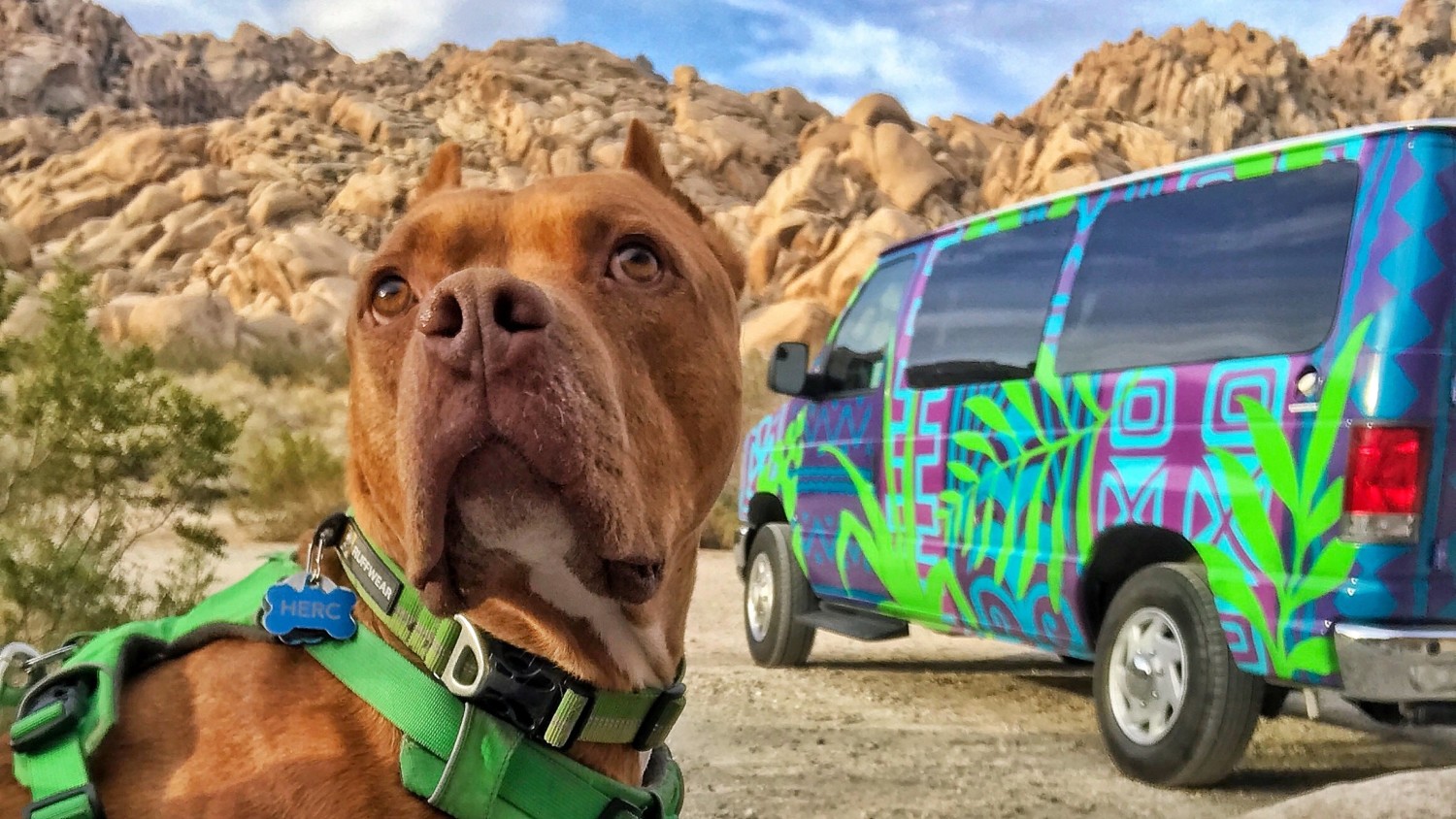
Regardless of how you’ll get from here to there, the most important part of any trip is returning home safely. Use a car safety harness or secured carrier to protect your pets in case of an accident and to keep them from bolting out of the car in unfamiliar territory.
Plan Your Route
Choosing a route for your trip is part of the fun! Our pet friendly trip planner will help you lay out your plan. Whether you’re hoping to hit some of America’s most pet friendly national parks, or making a pilgrimage on Historic Route 66, you’ll find plenty to see along the way.
READ MORE ⇒ The Ultimate Pet Friendly American Road Trip
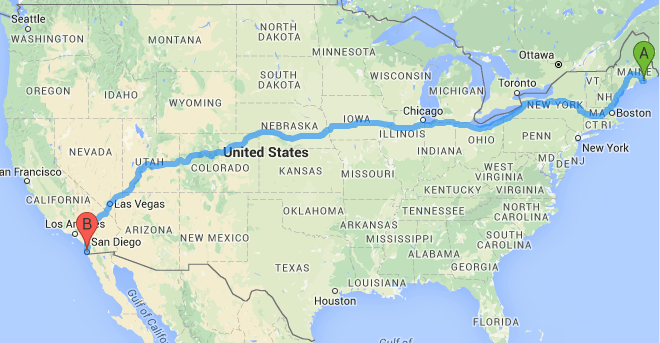
Then add pet friendly hotels, vacation properties, campgrounds, restaurants, and activities – like dog parks and pet friendly beaches – to your itinerary. You can also find veterinarians and pet supply stores, if the need arises.
If your dog can’t join you at any of the stops you want to make along the way, find a local doggy daycare were she can have fun while you take in the sights. If your dog isn’t a social butterfly and doggy daycare doesn’t appeal to her, look for a local pet sitter who will come to your hotel or RV and spend some time doing her favorite things while you’re away (cuddling, playing, going for a walk). GoPetFriendly has listing for both pet sitters and doggy daycare facilities to help with your search.
Choose Your Accommodations
Whether you’re pitching your tent in pet friendly campgrounds, staying in pet friendly hotels, or renting pet friendly cabins or vacation properties, consider making reservations in advance. Campgrounds are busy on weekends and holidays, and some hotels only offer a limited number of pet friendly rooms.
Even if you prefer to be spontaneous, making a few reservations at the most popular destinations along your route will provide some peace of mind. Then you can “wing it” by counting on known pet friendly hotel chains the rest of the time.

Watch For Travel Related Health Issues
It can take time for pets to adjust to the different environments you might encounter during your travels. For example, like humans, pets can experience altitude sickness. Of course, it’s a little more difficult to tell, because they can’t complain about having a headache!
Even if they’re not showing symptoms, it’s best to assume your dogs are feeling what you’re feeling and give them time to adapt. No long hikes, plenty of fresh water, and extra rest. Once you’re all feeling better, increase your activity level slowly, watching for shortness of breath or signs of discomfort.
Pack for Your Pets
Deciding what to pack for your pets can be a challenge. You want all the things they need to be comfortable. But there’s a limited amount of space available for all your travel gear! Follow this list and you should be covered for most eventualities.
READ MORE ⇒ Tips for Moving with Pets
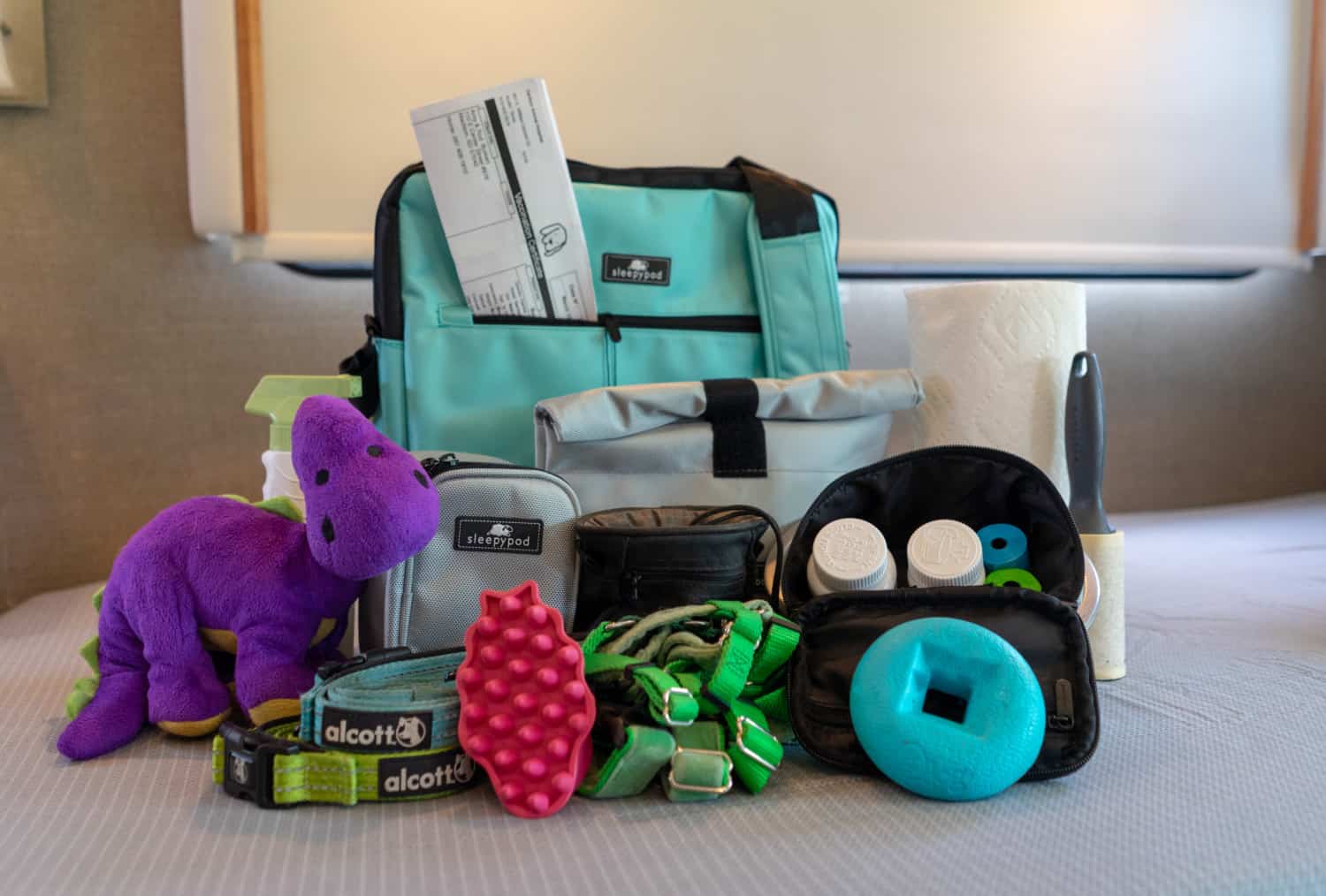
This section of the post contains affiliate links. Thank you!
Start with a pet travel bag that is easy to organize, and load it up with all your pet’s necessities:
Food and water bowls – portable bowls pack easily and are great when you are out & about. And no-spill water bowls are fantastic in the car or RV.
Food – If you’re not certain that you can pick up more of your pet’s food along the way, pack enough for the entire trip plus a little extra. For canned food, don’t forget the can opener!
All of your pets medications, vitamins, supplements, etc. And pack enough for your trip, plus a few extra days in case you’re delayed. (Also, remember the vaccination certificate and medical records mentioned above.)
A travel litter box and litter for your cat.
Treat pouch and treats – new places and experiences means constant training. Set your pup up for success and keep the rewards handy!
Your pet’s bed and a couple of toys – so he’s more comfortable spending the night in unfamiliar locations.
A blanket or sheet to cover any furniture in the hotel or vacation rental that your pet might want to use.
A roll of paper towels, wet wipes, a lint roller and some all-purpose cleaner – for muddy paws and other messes.
An old towel – in case of rain, or after swimming.
Waste bags to pick up after your dog along the way.
First aid kit … or make your own DIY pet first aid kit.
Flea and tick repellent and pet sunscreen.
An extra leash – Many places require your pet be on a leash no longer than six feet. You may also want to consider a long leash (15-20 feet) if you plan to hike with your dog or let him run in an unfenced area.
Hit The Road
Whether you’re planning to visit the most dog friendly national parks, cross the border to Canada, or embark on the Ultimate Pet Friendly Road Trip, remember that traveling with your pets is the perfect time to slow down and sniff the roses! Hustling from place to place can make your vacation feel more like work, so be conservative when estimating how much you can accomplish.
We’ve found that driving about 300 miles per day works well for us. We can stick to Myles’ exercise and feeding routine and enjoy the sights along the way.
READ MORE ⇒ Tips for Traveling Alone with Pets

Pets are very adaptable, and most are happiest when you’re together! They’re sure to be delighted with your vacation choice. And you’ll cherish all the memories you’ll make together down the road.
READ MORE ⇒ Traveling with Pit Bulls
Amazon Affiliate Disclosure: GoPetFriendly.com LLC is a participant in the Amazon Services LLC Associates Program, an affiliate advertising program designed to provide a means for website owners to earn advertising fees by advertising and linking to amazon.com, audible.com, and any other website that may be affiliated with Amazon Service LLC Associates Program. As an Amazon Associate, the owner of this site earns a commission from qualifying purchases.
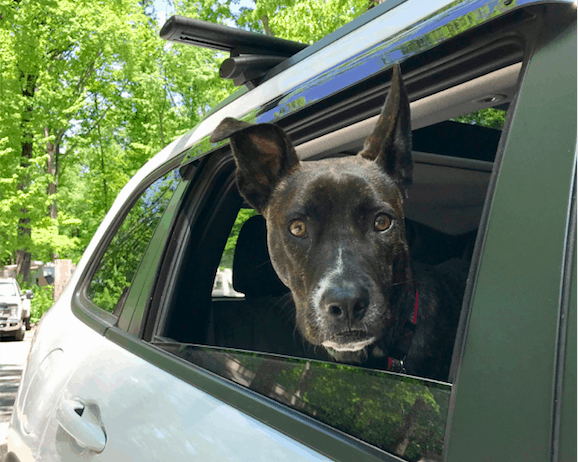
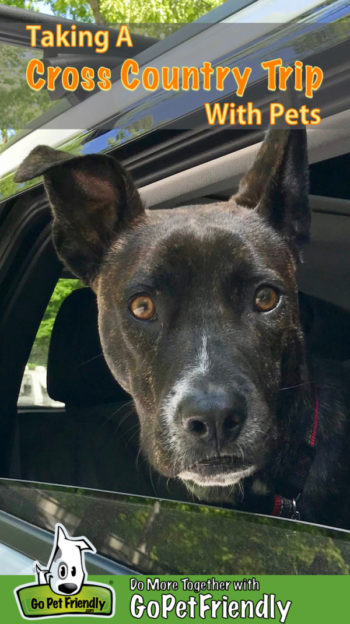
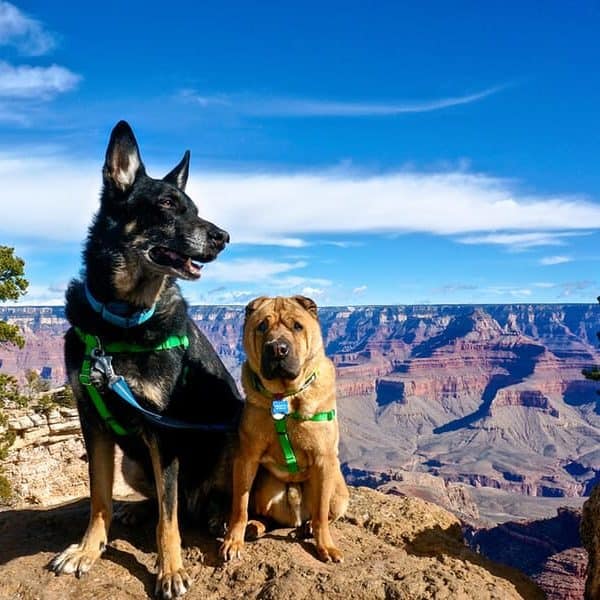
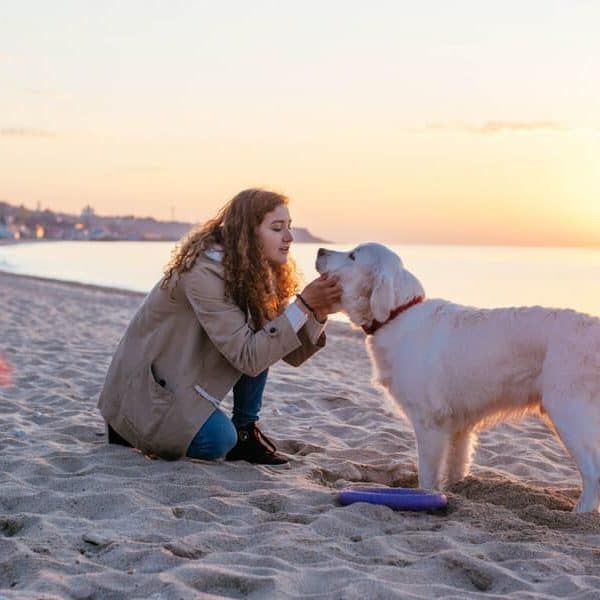
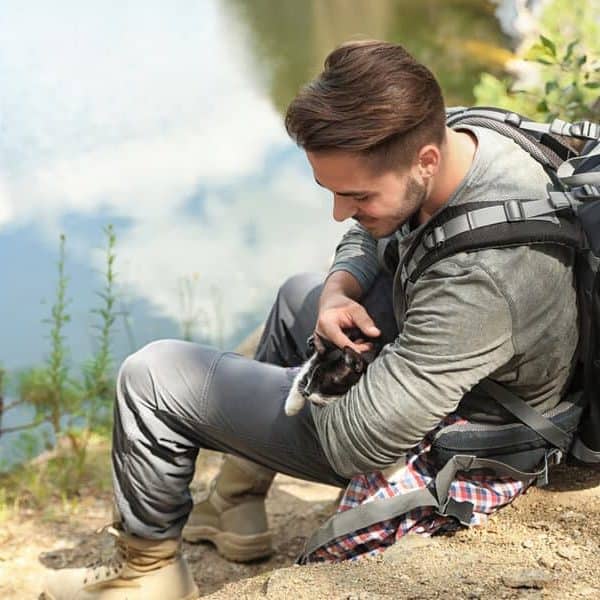

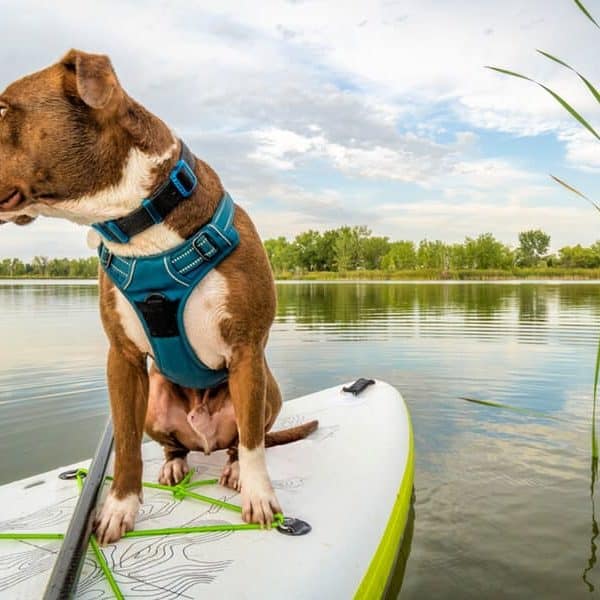


We live at 1200 ft altitude and are going on vacation to Yellowstone. We are concerned about our dogs travel to different altitudes. Is it safe for them to travel into different altitudes. Not planning on any hikes, they will mainly be in the vehicle riding
Hi Nelda! Thanks for your note. For an otherwise healthy pet, traveling to a different elevation should be a problem. They might tire more easily on long walks – but you might, too so it will work out fine! If your dogs have respiratory issues or other health conditions, it’s a good idea to call their vet, let them know your plans, and see if he/she has any concerns. I hope that helps and that you all have a fantastic trip!
did you mean to type “should” be a problem?
Hi Will! Thanks for catching that typo. I actually meant elevation shouldn’t be a problem for an otherwise health pet. Safe travels to you!
Some dogs are healthy and of a breed that will be fine traveling to higher elevations. While some dog might struggle. Health, age and breed should all be considered and the vet is the best person to determine that.
Hello! Can’t find any place to answer this: I drive across country w dog. What happens to the dog if I get sick in motel? Are there dog people that will take him? I’m afraid he’ll just get picked up and put in the pound.
Hi Terri! That’s a great question, and there are a few possible scenarios. With enough warning, you could arrange to board your pet with a local veterinarian or pet sitter until you recovered or a friend or family member could come pick him up.
If the illness came on suddenly, you could ask the hotel or campground staff to take care of him until a friend or family member could arrive. It’s a good idea to keep emergency contact information in your phone, room, and car in case you’re not able to communicate who should be notified of your situation.
If neither of these work, your dog would likely be taken to the local animal shelter and held there until you were well enough to collect him or could arrange for someone else to come get him. It’s not a great scenario, but he would be cared for in your absence. I hope that helps!